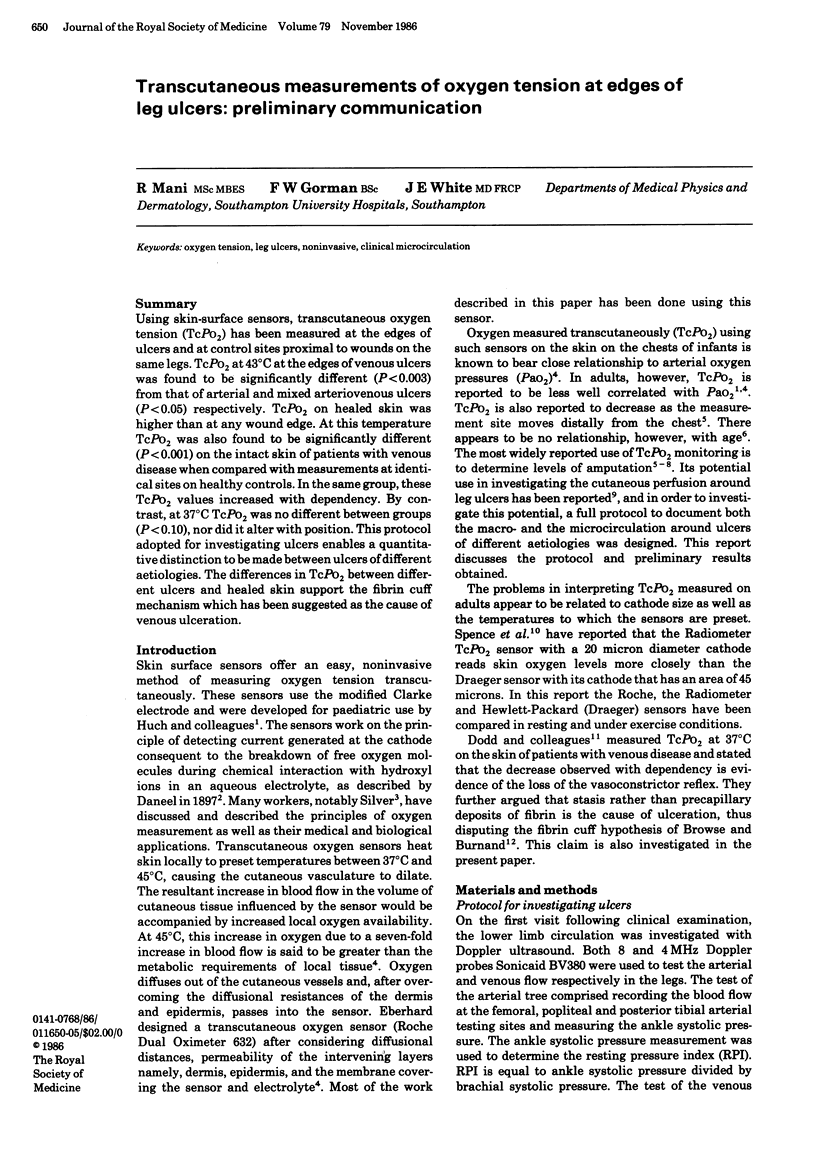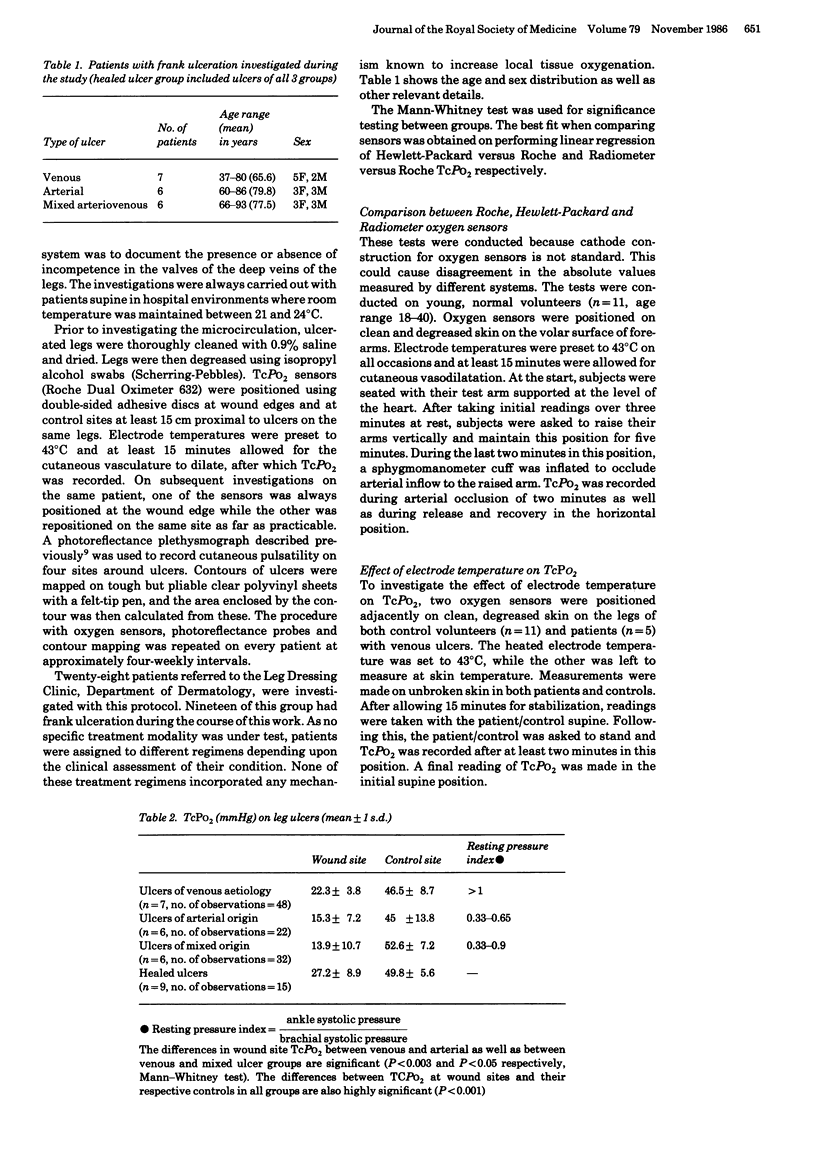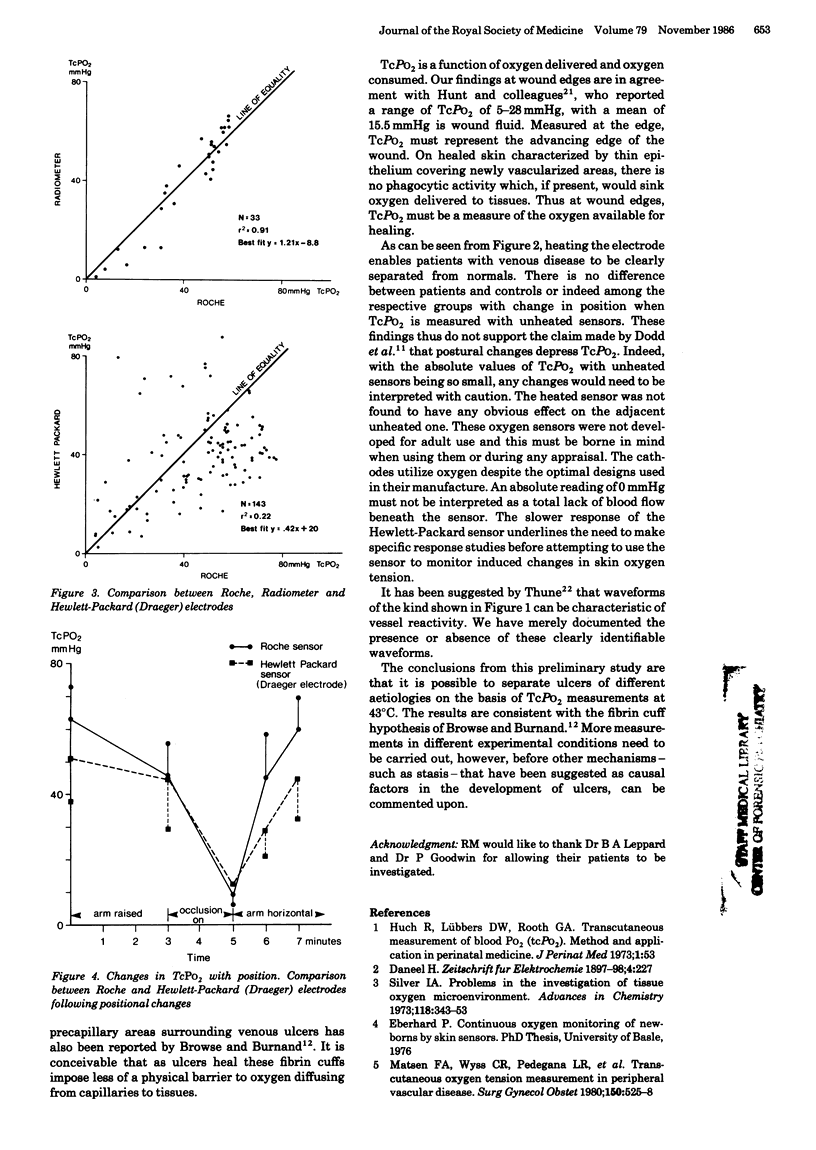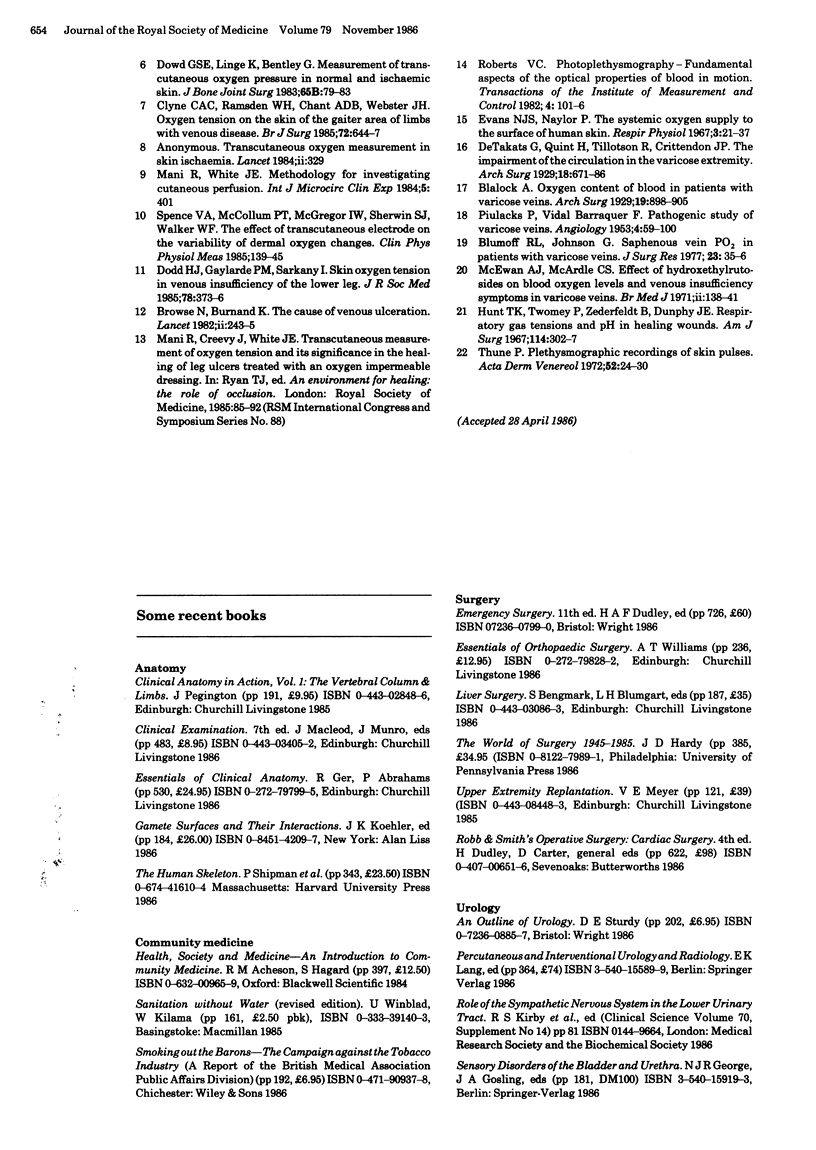Abstract
Using skin-surface sensors, transcutaneous oxygen tension (TcPo2) has been measured at the edges of ulcers and at control sites proximal to wounds on the same legs. TcPo2 at 43 degrees C at the edges of venous ulcers was found to be significantly different (P less than 0.003) from that of arterial and mixed arteriovenous ulcers (P less than 0.05) respectively. TcPo2 on healed skin was higher than at any wound edge. At this temperature TcPo2 was also found to be significantly different (P less than 0.001) on the intact skin of patients with venous disease when compared with measurements at identical sites on healthy controls. In the same group, these TcPo2 values increased with dependency. By contrast, at 37 degrees C TcPo2 was no different between groups (P less than 0.10), nor did it alter with position. This protocol adopted for investigating ulcers enables a quantitative distinction to be made between ulcers of different aetiologies. The differences in TcPo2 between different ulcers and healed skin support the fibrin cuff mechanism which has been suggested as the cause of venous ulceration.
Full text
PDF




Selected References
These references are in PubMed. This may not be the complete list of references from this article.
- Blumoff R. L., Johnson G., Jr Saphenous vein PpO2 in patients with varicose veins. J Surg Res. 1977 Jul;23(1):35–36. doi: 10.1016/0022-4804(77)90187-1. [DOI] [PubMed] [Google Scholar]
- Browse N. L., Burnand K. G. The cause of venous ulceration. Lancet. 1982 Jul 31;2(8292):243–245. doi: 10.1016/s0140-6736(82)90325-7. [DOI] [PubMed] [Google Scholar]
- Clyne C. A., Ramsden W. H., Chant A. D., Webster J. H. Oxygen tension on the skin of the gaiter area of limbs with venous disease. Br J Surg. 1985 Aug;72(8):644–647. doi: 10.1002/bjs.1800720820. [DOI] [PubMed] [Google Scholar]
- Dodd H. J., Gaylarde P. M., Sarkany I. Skin oxygen tension in venous insufficiency of the lower leg. J R Soc Med. 1985 May;78(5):373–376. doi: 10.1177/014107688507800505. [DOI] [PMC free article] [PubMed] [Google Scholar]
- Dowd G. S., Linge K., Bentley G. Measurement of transcutaneous oxygen pressure in normal and ischaemic skin. J Bone Joint Surg Br. 1983 Jan;65(1):79–83. doi: 10.1302/0301-620X.65B1.6822606. [DOI] [PubMed] [Google Scholar]
- Evans N. T., Naylor P. F. The systemic oxygen supply to the surface of human skin. Respir Physiol. 1967 Aug;3(1):21–37. doi: 10.1016/0034-5687(67)90020-5. [DOI] [PubMed] [Google Scholar]
- Huch A., Huch R., Rooth G. Monitoring the intravascular Po2 in newborn infants. J Perinat Med. 1973;1(1):53–59. doi: 10.1515/jpme.1973.1.1.53. [DOI] [PubMed] [Google Scholar]
- Hunt T. K., Twomey P., Zederfeldt B., Dunphy J. E. Respiratory gas tensions and pH in healing wounds. Am J Surg. 1967 Aug;114(2):302–307. doi: 10.1016/0002-9610(67)90388-1. [DOI] [PubMed] [Google Scholar]
- Matsen F. A., 3rd, Wyss C. R., Pedegana L. R., Krugmire R. B., Jr, Simmons C. W., King R. V., Burgess E. M. Transcutaneous oxygen tension measurement in peripheral vascular disease. Surg Gynecol Obstet. 1980 Apr;150(4):525–528. [PubMed] [Google Scholar]
- McEwan A. J., McArdle C. S. Effect of hydroxyethylrutosides on blood oxygen levels and venous insufficiency symptoms in varicose veins. Br Med J. 1971 Apr 17;2(5754):138–141. doi: 10.1136/bmj.2.5754.138. [DOI] [PMC free article] [PubMed] [Google Scholar]
- PIULACHS P., VIDAL-BARRAQUER F. Pathogenic study of varicose veins. Angiology. 1953 Feb;4(1):59–99. doi: 10.1177/000331975300400108. [DOI] [PubMed] [Google Scholar]
- Spence V. A., McCollum P. T., McGregor I. W., Sherwin S. J., Walker W. F. The effect of the transcutaneous electrode on the variability of dermal oxygen tension changes. Clin Phys Physiol Meas. 1985 May;6(2):139–145. doi: 10.1088/0143-0815/6/2/005. [DOI] [PubMed] [Google Scholar]
- Thune P. Plethysmographic recordings of skin pulses. V. Piezoelectric and photoelectric measurements in venous leg ulcers. Acta Derm Venereol. 1972;52(1):24–30. [PubMed] [Google Scholar]


